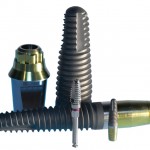
Implant–supported restorations show good success rates in healthy tissues while studies in irradiated jaws contrasting outcomes have been reported. The aim of this review was to assess the survival rate of titanium implants placed in irradiated jaws.
The Medline, Embase, and CENTRAL, and OpenGRAY databases were searched together with a number of journals (Clinical Implant Dentistry and Related Research, Clinical Oral Implants Research, International Journal of Oral and Maxillofacial Implants, and Journal of Oral and Maxillofacial Surgery). Randomized controlled trials (RCTs) controlled clinical trials and observational studies reporting outcomes from irradiated and non-irradiated patients were considered eligible. Screening of papers, and data abstraction was conducted independently by two reviewers with a third reviewer resolving disagreements. Quality assessment was undertaken using The Cochrane Risk of Bias tool and the Newcastle- Ottawa scale. The main outcome was he number and/or percentage of implants lost as reported by each study (overall number of implants lost and/or the number of implants lost per patient).
15 articles met the inclusion criteria (2 RCTs, 13 case series). Both RCTs were considered to have unclear risk of bias and none of the observational studies were of high methodological quality.
- Most of the studies reported that implant survival was adversely affected by radiotherapy.
- The mean survival rate ranged from 46.3% to 98.0% among the studies, and some studies reported that implants placed in irradiated mandible showed better survival rates.
- A meta-analysis (7 studies)
- showed a significantly increase risk of implant lost in irradiated patients RR: 2.74; 95% CI: 1.86, 4.05; p < .00001, I2 = 0%.
- Maxillary implants were shown to have greater losses RR: 5.96; 95% CI: 2.71, 13.12; p < .00001, I2 = 33%).
The authors concluded
Radiotherapy was associated with higher rates of implant loss in the majority of individual studies and in the overall meta-analysis, especially for implants placed in the maxilla.
Comment
Only two RCTs are included in this meta-analysis, with 11 retrospective case series and 2 prospective case series. The authors highlight methodological issues with case series and these should not be underestimated when considering the findings of this review. One of the RCTs included considered the use of hyperbaric oxygen therapy (HBO). This study was the only one included in the latest update of the Cochrane review by Esposito et al (2013), it was considered to be of very low quality and they concluded: –
Despite the limited amount of clinical research available, it appears that HBO therapy in irradiated patients requiring dental implants may not offer any appreciable clinical benefits. There is a definite need for more RCTs to ascertain the effectiveness of HBO in irradiated patients requiring dental implants.
Links
Chambrone L, Mandia J Jr, Shibli JA, Romito GA, Abrahao M. Dental Implants Installed in Irradiated Jaws: A Systematic Review. J Dent Res. 2013 Oct 24. [Epub ahead of print] PubMed PMID: 24158336.
Esposito M, Worthington HV. Interventions for replacing missing teeth: hyperbaric oxygen therapy for irradiated patients who require dental implants. Cochrane Database of Systematic Reviews 2013, Issue 9. Art. No.: CD003603. DOI: 10.1002/14651858.CD003603.pub3.
